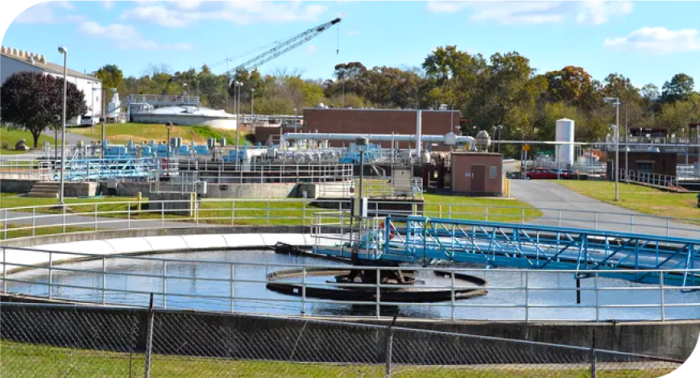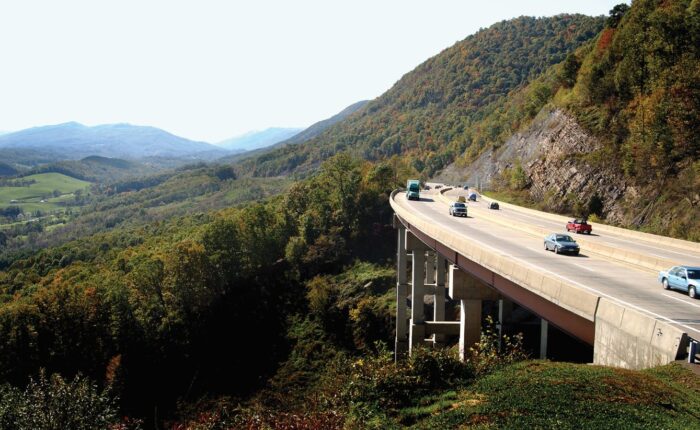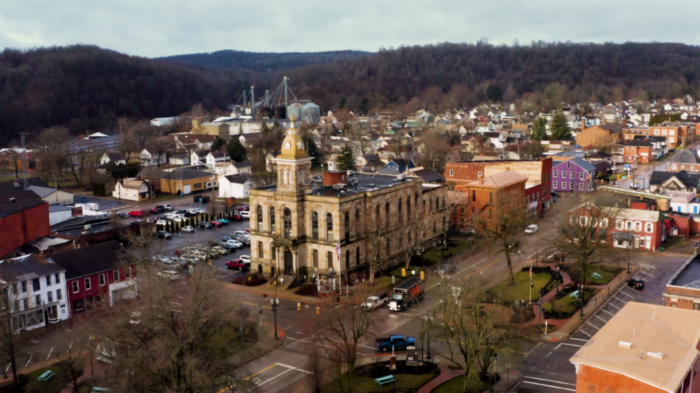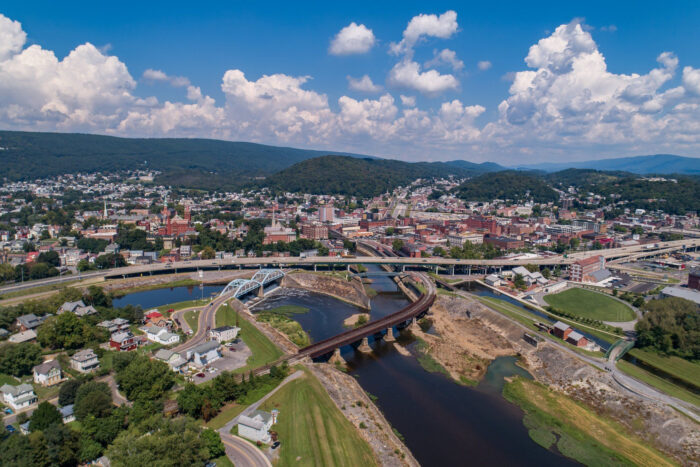
Building Appalachia’s infrastructure has been an ARC investment priority for 58 years, especially the development and maintenance of basic infrastructure systems for water, sewer, energy, and stormwater. ARC’s Area Development Program invested $66.8 million in water and sewer projects alone in Fiscal Year 2022. When thinking about economic growth, however, it can be difficult to connect these investments — such as water tanks and wastewater treatment — to new businesses, creative placemaking, and increased job opportunities in communities.
Hagerstown, Maryland is not only making that important connection, but also using increased infrastructure efficiency to grow sustainably and limit their environmental impact.
Hagerstown’s Wastewater Capacity Management
Like all states, Maryland complies with the Clean Water Act and associated National Pollutant Discharge Elimination System (NPDES) to limit nutrient and chemical discharges into bodies of water, including wastewater treatment plant discharges. Excess water entering a treatment plant through cracked pipes, high levels of stormwater – which together are referred to as excess inflow/infiltration (I&I) – or other issues can make staying within those limits difficult.
Hagerstown’s plant had approached its NPDES limit due to excess I&I, but expansion was not an option without also violating their permits. The lack of capacity in their wastewater system was reducing the City’s ability to connect new business and residential connections, which are necessary for economic growth. After conducting a Sanitary Sewer Evaluation and developing a Capacity Management Operation and Maintenance manual, the City identified several sections of the collection system upgrade within their existing limitations.
The Project
The project itself required relining 2,500 feet of the City’s vitrified clay pipe sewer lines with cost-effective, durable, cured-in-place pipes that would sit inside the existing pipe. The new PVC reduces long-term maintenance and increases overall longevity; Hagerstown expects to use the new lines for at least 50 years, but could maintain the pipes for nearly twice that time. The project also removed lines and intrusions into the pipes, as well as restoring several manholes also known to allow excess water into the system.
While the project itself was straightforward, piping location required coordination with local railroads, which can often be a complicated permitting process to avoid train schedules disruption. Hagerstown’s Director of Utilities Nancy Hausrath emphasized the importance of using critical infrastructure projects like this to build strong local partnerships.
“One of the unintended positive consequences is building relationships, whether they are public or private sector—things get easier as you get to know one another…The more people that you have on your contact list, the better you can network and get things done.”
When completed in late 2022, Hagerstown had reduced flows by 1.5-2 million gallons/day on average, running under 6 million gallons a day compared to 7.5-8 million gallons. All that capacity can be translated into new sewer connections and growth for the city of Hagerstown.
Advice
What advice does Director Hausrath give for communities working on increasing efficiency? Identify funding early, know your grant program requirements, and use your success as motivation!
“I recommend understanding the program requirements, and [not only] building…in time [for] the project, but [also for securing] the matching funds needed to make it a reality…Independent of whether we will receive grant funding, every year we identify capital dollars…which allows us to continue to move forward.”
Interested in infrastructure? Register for Stop #4 of the Appalachia Envisioned Roadshow on Tuesday, April 18. At this virtual event, Governors, ARC partners, and other infrastructure leaders will share how they’re bolstering utilities, roads, broadband, and more in Ohio, Kentucky, and West Virginia.


